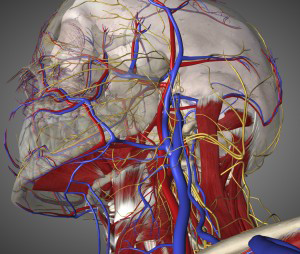Skip header
Skip main content
 Migraine Headaches and NUCCA
Migraine Headaches and NUCCA
A clinical study involving 11 migraine patients and NUCCA care was recently performed by Woodfield et al. Let’s take a look at how the study was conducted and how the results show the benefits of NUCCA care for migraines patients.
The Method of Study
The 11 patients in the study had never experienced upper cervical chiropractic care before. All were subject to having migraines and were required to have at least 10-26 days with a headache each of the prior 4 months. Also, at least 8 of those headache days per month needed to register a 4 out of 10 or higher for pain. While many candidates had either a concussion, a car accident, or both in their history, candidates who experienced trauma in the past year were excluded.
NUCCA practitioners used various forms of testing to evaluate patients. Supine Leg Check Screening tested patients for visible signs of one leg being shorter, which can indicate atlas misalignment. Gravity stress analyzers were used, as well as calipers for detecting asymmetry in the pelvis. A typical NUCCA radiograph series also consists of three x-rays—a lateral cervical film (side view), a nasium film (back view), and a vertex film (top view)—to identify specific misalignments.
Based on these diagnostic techniques, the practitioner then prepares an alignment specifically designed for the patient involving the patient’s position, the stance of the practitioner, and the proper force vector for atlas correction. Patients were given between 1 and 5 corrections.
The Results for the Migraine Patients
Headache days per month decreased for patients on average. Baseline was 14.5 headache days per month. After one month of NUCCA treatment, patients experienced 11.4 headache days per month. By the end of the two-month study, patients were down to 8.7 headache days per month.
Quality of life measurements in three categories also improved dramatically over the course of two months as follows:
- Restrictive improved from 38.4 to 73.5
- Emotional improved from 53.3 to 81.2
- Physical improved from 54.1 to 86.8
MIDAS score (which measures migraines in the form of degree of disability caused) improved from an average of 46.7 to just 14.6.
While further studies are needed to provide a quantifiable way of documenting the physiological changes that take place due to the corrections, the results speak for themselves as to the benefits of NUCCA for migraine patients, especially those with a history of head or neck trauma.
Reference:
Woodfield, H. Charles, III. “Effect of Atlas Vertebrae Realignment in Subjects with Migraine: An Observational Pilot Study.” Accessed online: 24 May 2016.
Skip Contact Us form
Contact Us
Return to the top of the page
